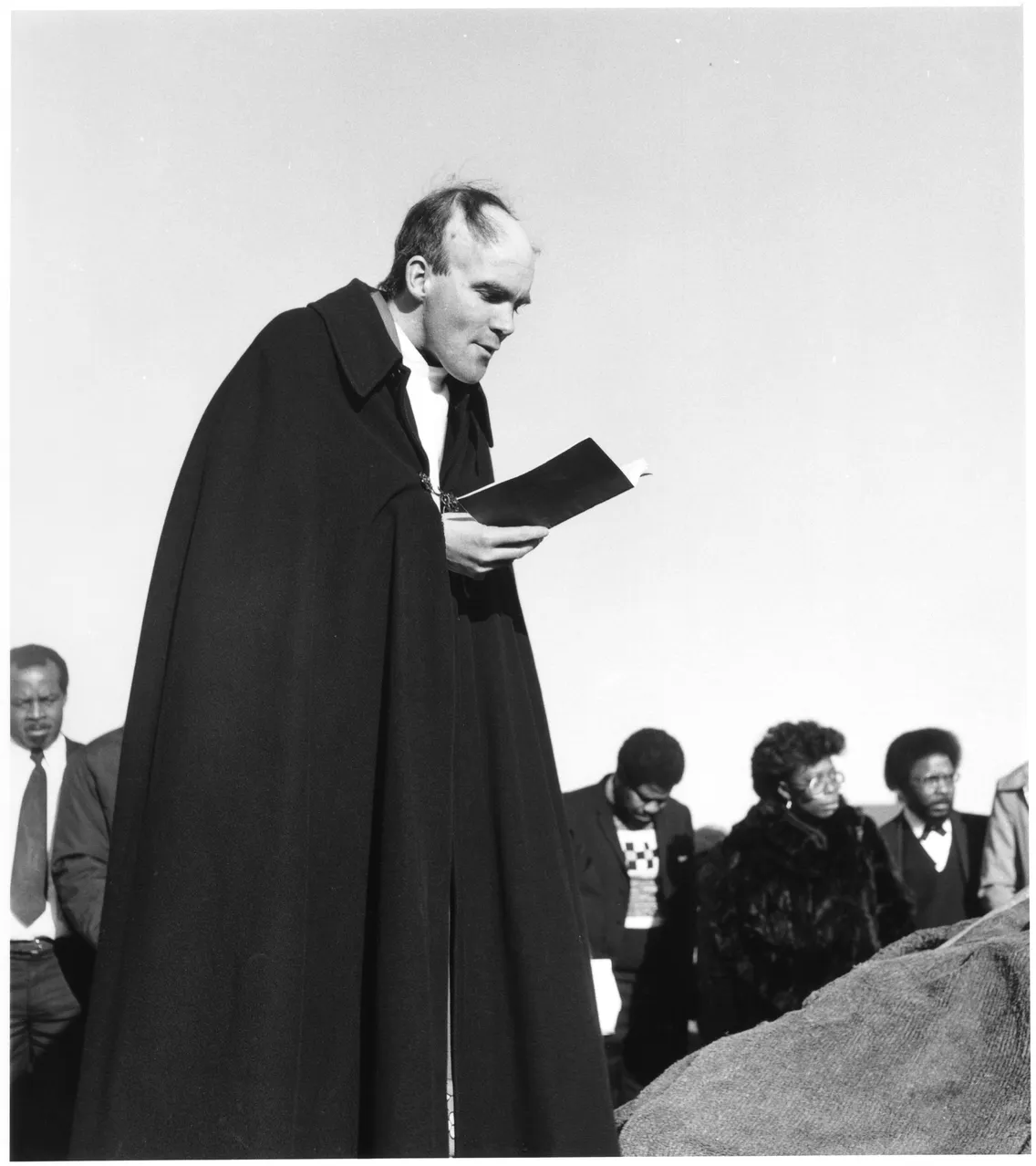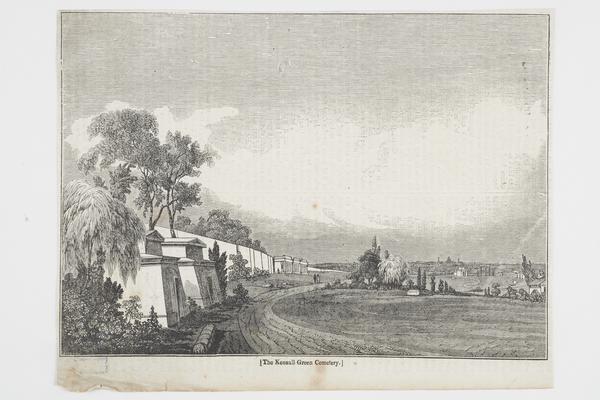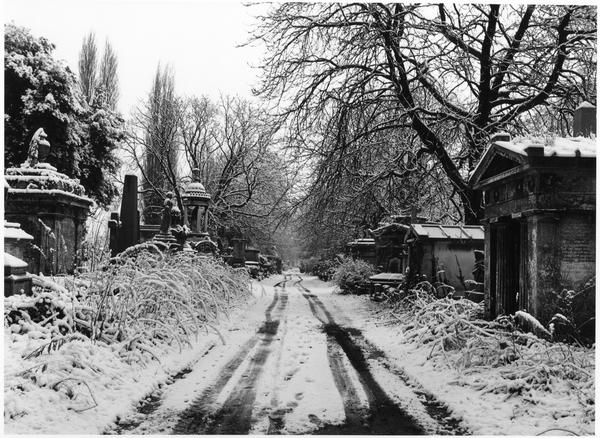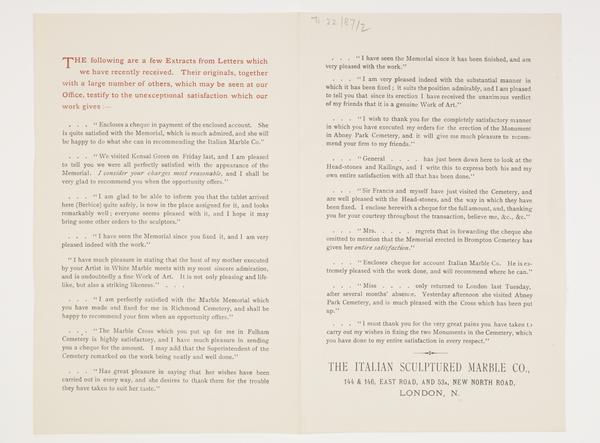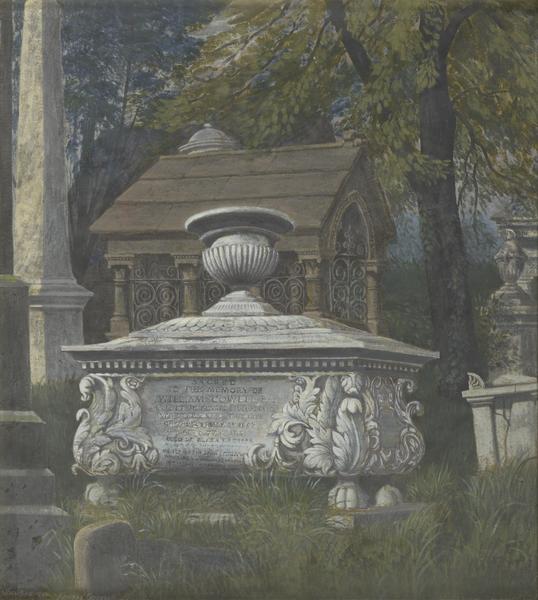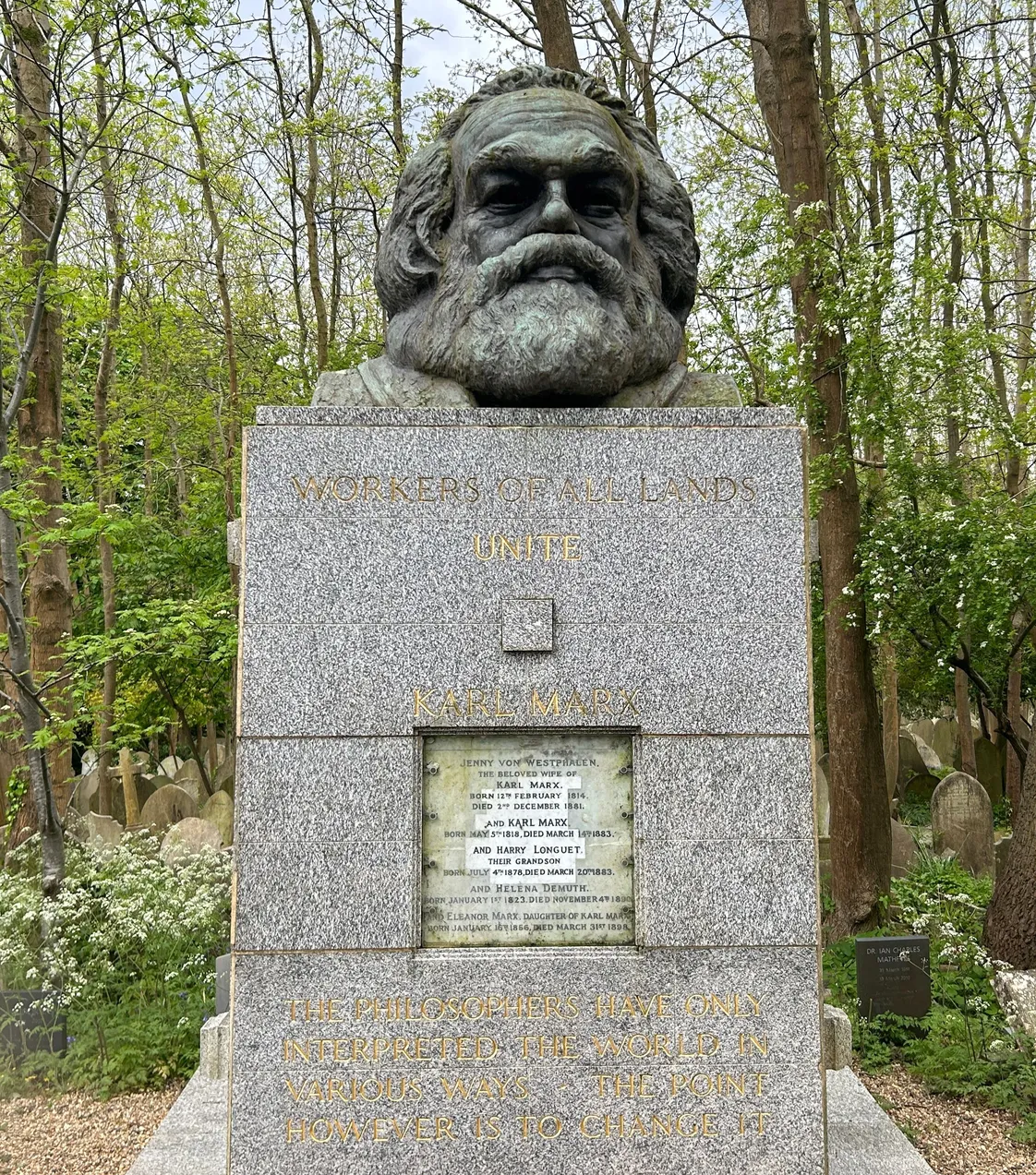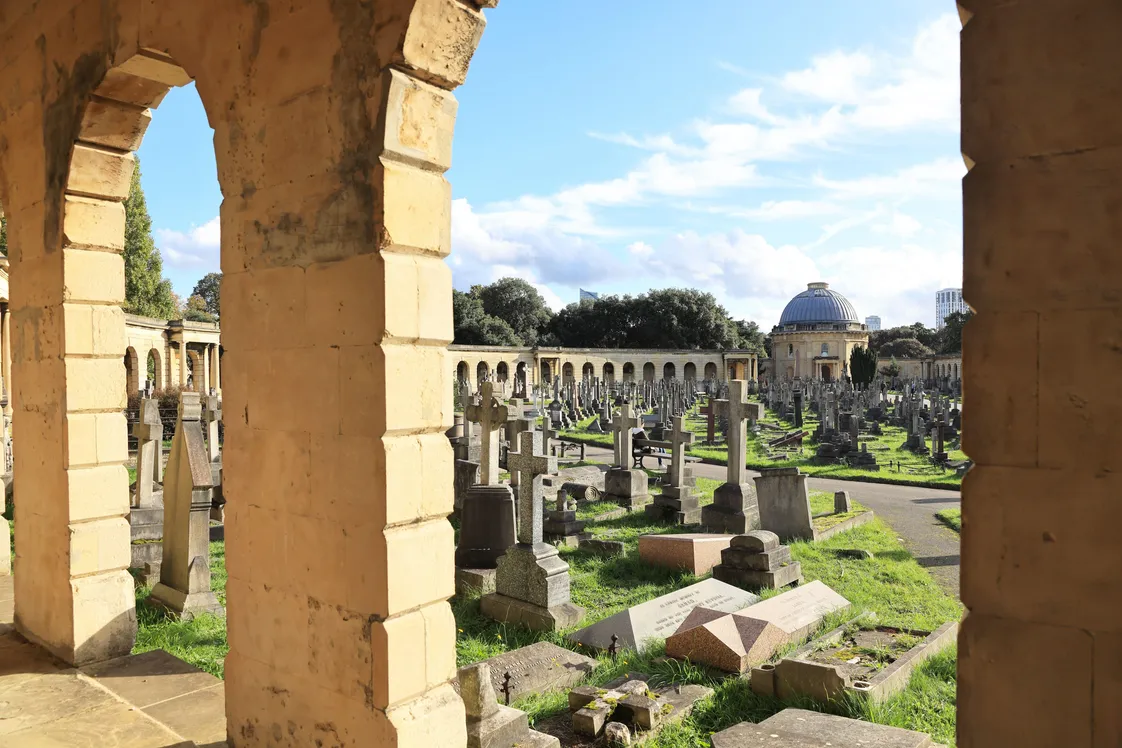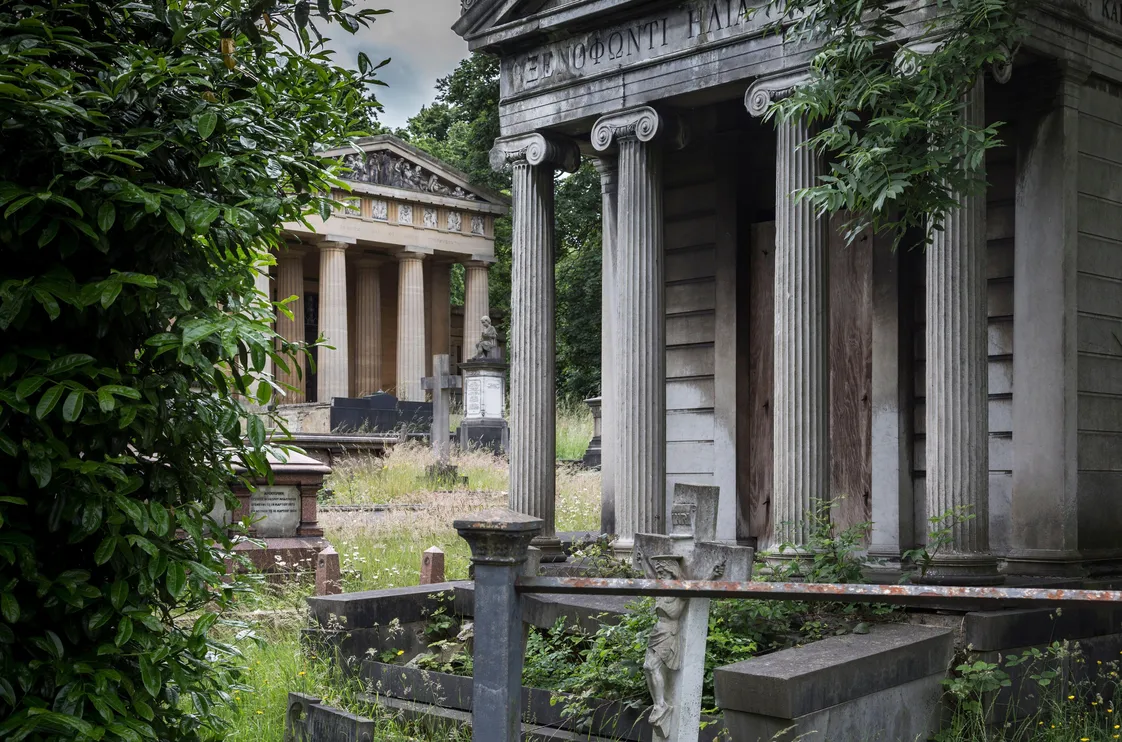Kensal Green Cemetery
Kensal Green Cemetery, in north-west London, is the oldest and largest of the city’s Magnificent Seven. But it took a prince’s funeral to really change attitudes to final resting places.
Kensington & Chelsea
1833
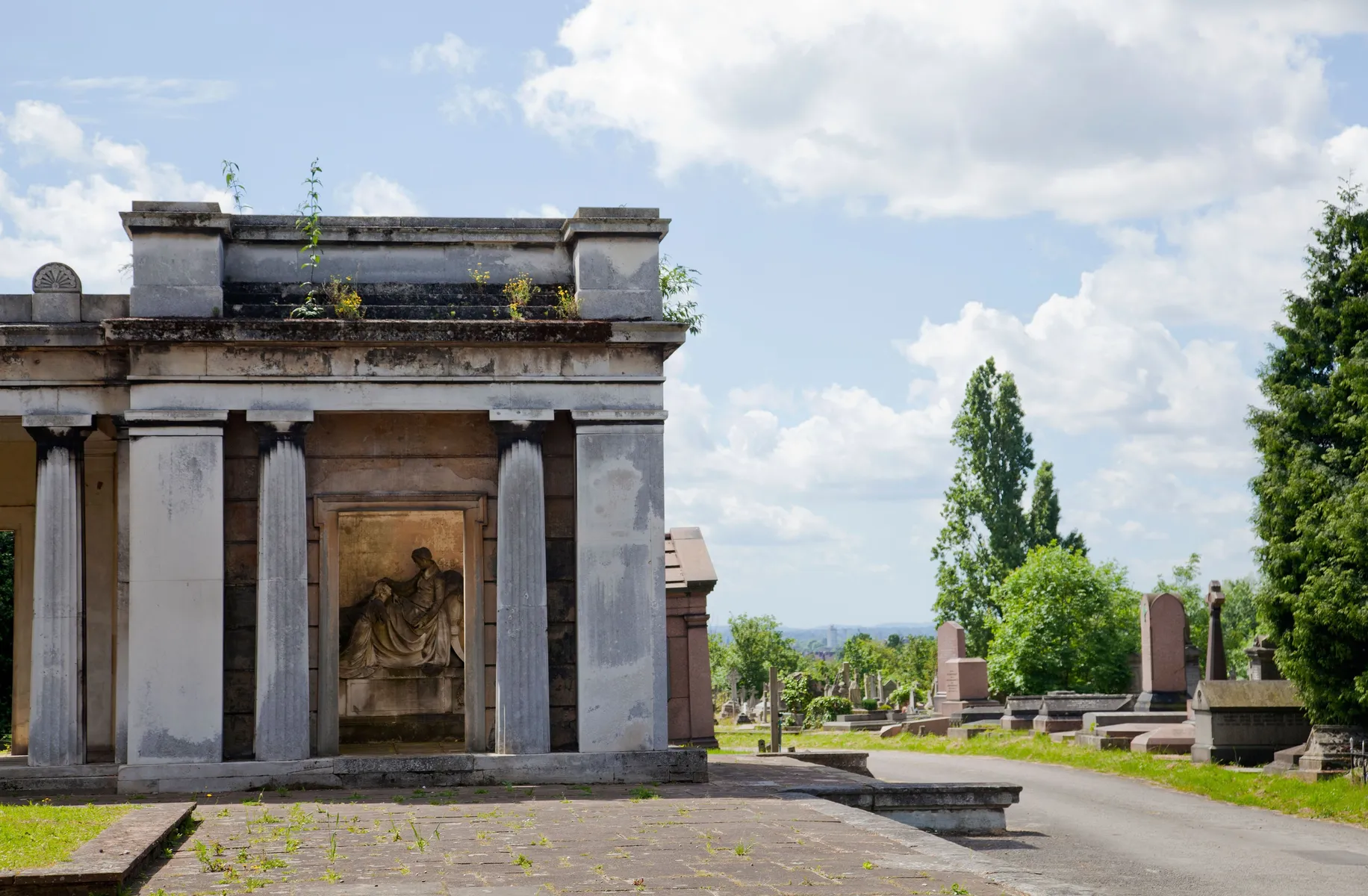
The Dissenter's Chapel at Kensal Green Cemetery.
London’s first garden cemetery
London’s lack of space to bury the dead became a serious problem in the 1800s. To help with the issue of overcrowding, parliament agreed that seven commercial cemeteries could be built on sites that were then on the outskirts of London. These are now referred to as the Magnificent Seven.
Kensal Green Cemetery was the first to open in 1833. Originally called All Souls Cemetery, it was built and run by the General Cemetery Company.
Kensal Green Cemetery’s elegant, restful design made it popular from day one. But it was given a further boost in 1843 when Prince Augustus Frederick, Duke of Sussex, was buried there instead of in a traditional royal state funeral.
The cemetery became the chosen location for many powerful and wealthy Victorians’ final resting places. This is reflected in the number of large, ornate monuments found across the site.
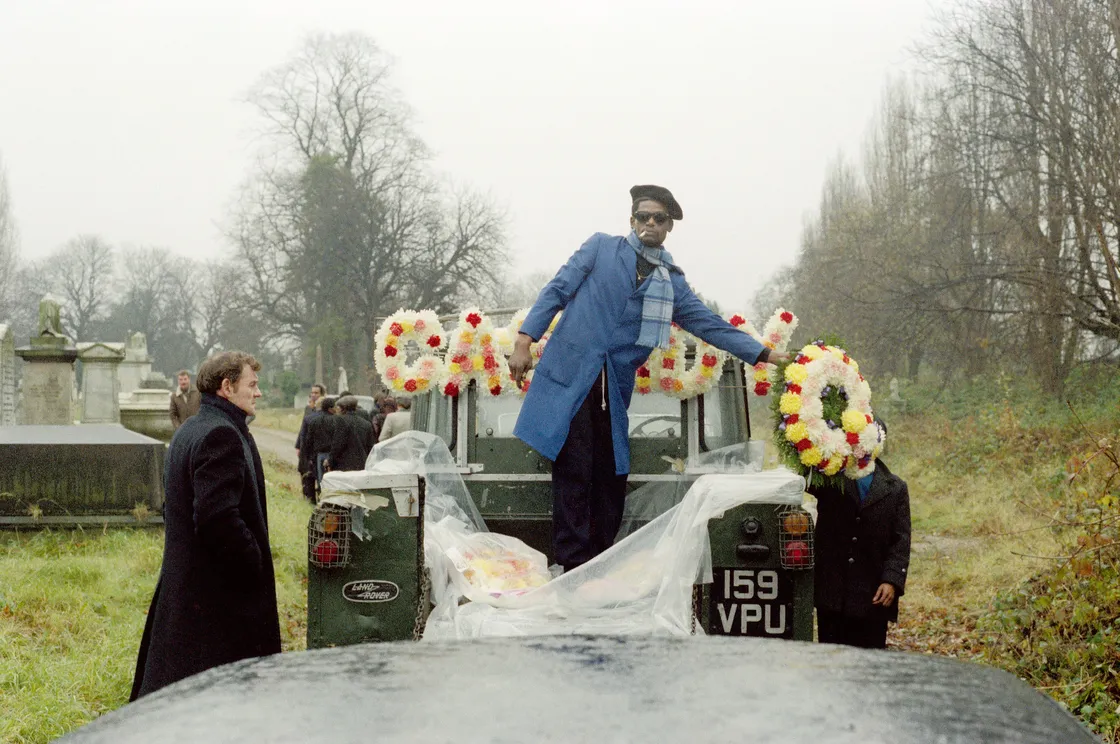
Photographer Charlie Phillips captures a funeral at Kensal Green Cemetery in 1974.
Cemetery architecture
Its buildings – including the entrance arch, two chapels, colonnades and catacombs – were designed in an elegant Greek Revival style.
The landscaping was said to be inspired by Père Lachaise Cemetery in Paris. It mixed neat, formal planting such as avenues of trees with more relaxed planting.
Most of the site was dedicated to members of the Anglican church. But there was also a significant section for dissenters – Christians who were not Anglican.
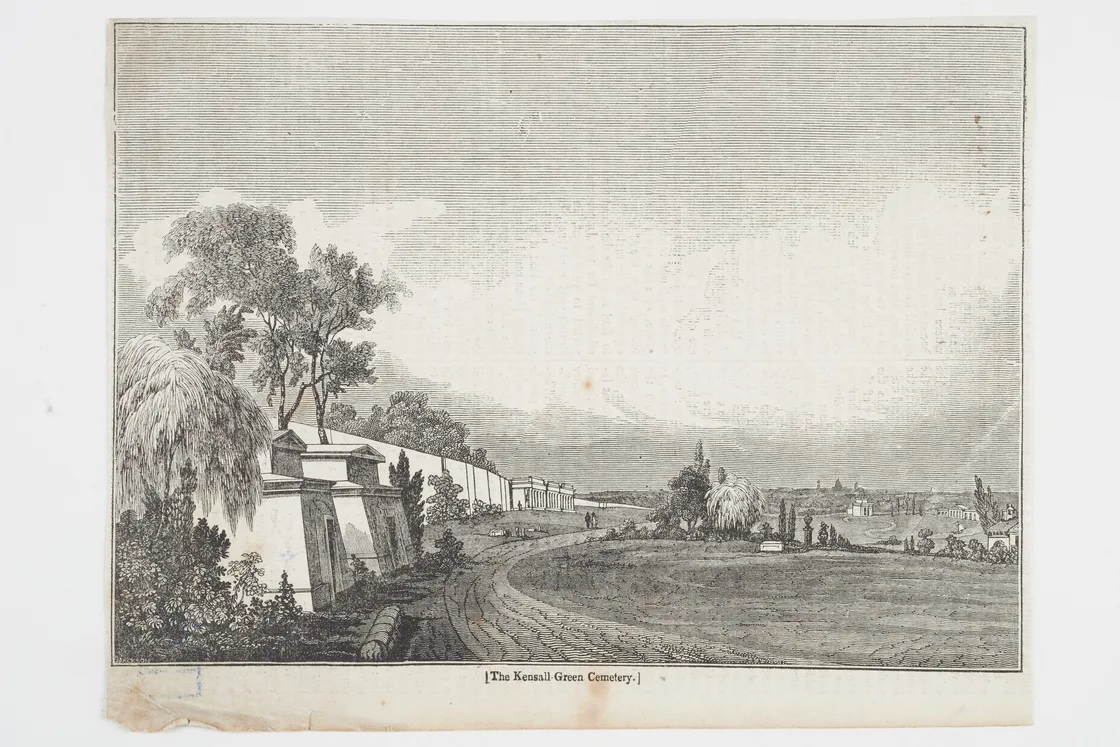
Print depicting Kensal Green Cemetery around 1845.
Today, the cemetery serves all faiths and has four chapels. The site is still owned and run by the General Cemetery Company.
Who’s buried at Kensal Green Cemetery?
William Henry Smith, son of the founder of the retail chain WHSmith, is buried there. As is Charles Blondin, the French acrobat famous for crossing Niagara Falls on a tightrope.
The Brunel family has a tomb at Kensal Green where engineer Isambard Kingdom Brunel is buried, along with his father, Marc Isambard Brunel.
It’s also the final resting place of writers such as William Makepeace Thackeray, Anthony Trollope, Wilkie Collins and Harold Pinter.
Nature thrives among the graves
Among the 65,000 graves at Kensal Green Cemetery, the site teems with wildlife. It’s been declared a Site of Metropolitan Importance for Nature Conservation.
The plant life is diverse, thanks to the site’s mix of woodland, meadow and scrub. This attracts many kinds of animals. Surveys have recorded over 18 kinds of butterfly, 30 bird species and numerous mammals, including hedgehogs, weasels and Pipistrelle bats.


